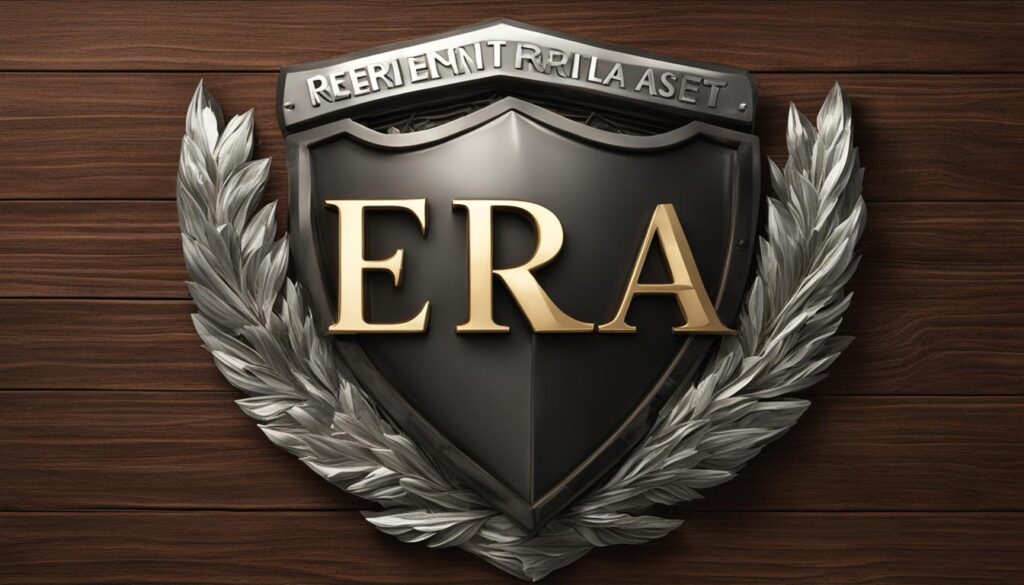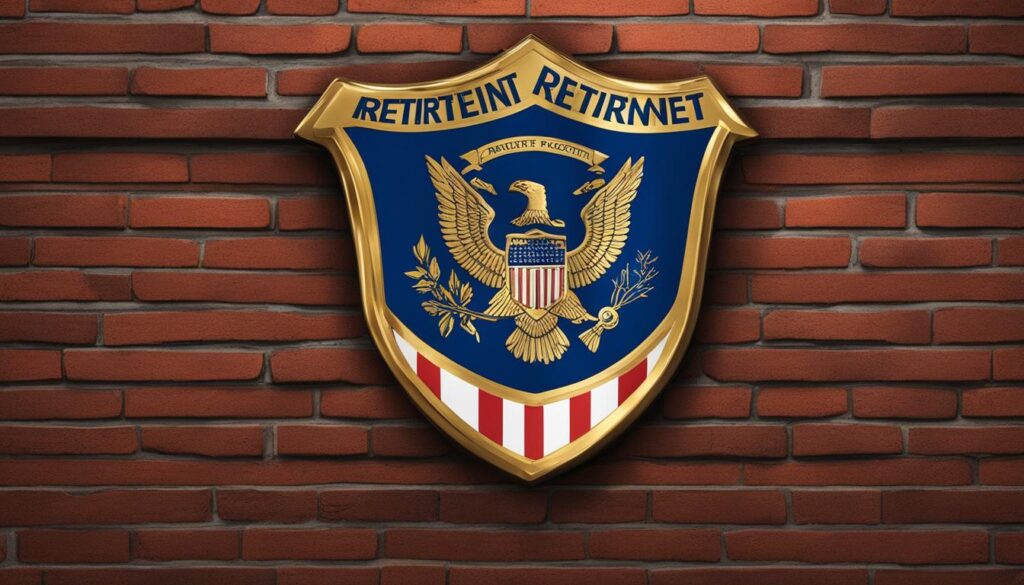Employer-sponsored retirement plans, such as 401(k)s, offer robust protection against creditors due to ERISA regulations, ensuring that plan participants’ assets remain secure even in cases of bankruptcy.
These ERISA-qualified plans, which include deferred compensation, pensions, and profit-sharing plans, are generally beyond the reach of creditors, though exceptions exist regarding claims by ex-spouses, the IRS, and for debts related to penalties or one’s wrongdoing against the plan. ERISA plans harbor features like the anti-alienation clause, solidifying their defensive stance against unauthorized access to the assets prior to retirement.
Understanding Your 401k’s Vulnerabilities
Despite the robust defenses offered by ERISA-qualified plans, not all retirement accounts enjoy equal levels of protection. It is essential to be aware of the vulnerabilities within your 401(k) that may surface in certain situations, such as divorce settlements, tax debt collections, and legal actions for criminal activities. A thorough understanding of both federal and local laws governing the security of your retirement savings will help mitigate potential risks and safeguard your finances.
Non-ERISA accounts, like standard Individual Retirement Accounts (IRAs), lack the same guardrails as their ERISA-qualified counterparts. Consequently, these accounts are subject to state-level variance in creditor protection, resulting in differing degrees of protection depending on the account holder’s state of residence. This emphasizes the importance of understanding the intricacies of your retirement savings plan, as account types and the state you reside in significantly impact asset protection strategies.
In addition to federal regulations, it is crucial to stay informed about the nuances in your state’s laws regarding retirement account protection. State-level protections for retirement wealth can range from comprehensive coverage to limited defenses, depending on the region. Your residency status plays a vital role in determining the scope and amount of protection offered to your retirement funds, so it is essential to be aware of local legal guidelines when formulating your asset protection plan.
The Significance of Employer-Sponsored Retirement Plans

Employer-sponsored retirement plans like 401(k)s are the preferred choice for many Americans due to the immense benefits and protection they provide. A significant reason for this lies in their compliance with the Employee Retirement Income Security Act (ERISA), which safeguards participants’ assets from a wide array of potential threats.
From shielding against creditors to ensuring stability in the wake of employer financial struggles, ERISA-covered plans provide a vital foundation for secure retirement savings. Within this section, we will explore how ERISA offers extensive protection for your 401(k) and discuss the crucial role of independent trustees in preserving your retirement wealth.
How ERISA Safeguards Your 401k
ERISA was enacted to secure employees’ vested interest in their employer-sponsored retirement plans. By requiring employers to adhere to strict federal guidelines, ERISA ensures that plans like 401(k)s provide a reliable source of income during retirement.
These guidelines include mandatory employer setup, adherence to federal contribution rules, and regulated funding and vesting schedules. As a result, ERISA-covered plans remain protected from the risk of employer financial instability and creditors. Bankruptcy filings and other financial perils become less daunting to plan participants as ERISA’s protective measures keep their retirement savings intact.
The Role of an Independent Trustee
An independent trustee’s position within a 401(k) plan is critical to the underlying asset protection strategy. By managing the plan’s assets separate from the employer, independent trustees ensure that employees’ retirement funds are shielded from any company-specific financial distress.
Typically, employer-sponsored retirement plans like 401(k)s are managed by independent trustees to guarantee that assets are handled without any interference from the employer. This isolation eliminates the risk of creditors accessing the funds and allows for well-informed, objective decision-making in the best interest of plan participants.
In summary, the combination of ERISA guidelines and independent trustees provides a comprehensive security framework for your 401(k) account. This protective barrier ensures that you can confidently pursue your retirement goals without the looming fear of financial turmoil or creditor claims derailing your financial future.
The Impenetrable Shield of ERISA-Qualified Plans

In the realm of retirement planning, ERISA-qualified plans, such as 401(k)s, stand out as an impenetrable shield against would-be creditors. These plans, ensured by stringent federal requirements, offer an unmatched level of protection for the assets they hold. This ultimately provides a sense of assurance and peace of mind for account holders knowing that their hard-earned savings are secure, reserved exclusively for their intended purpose – a comfortable retirement.
As the foundation of 401k asset protection, ERISA-qualified plans exemplify resilience against creditor intrusion. Their adherence to strict federal guidelines emphasizes the infallible strength of such plans, making them the gold standard in safeguarding retirement wealth. This strong defense is especially valuable when navigating the complexities of personal finance, such as navigating through the challenges of bankruptcy and divorce settlements.
By complying with these rigorous federal requirements, ERISA-qualified plans ensure that account holders can trust in the security and stability of their investments. This assurance is essential for maintaining a comfortable and worry-free retirement, providing a sturdy financial foundation that will remain steadfast against any potential threats or disruptions.
Long recognized as the hallmark of 401k asset protection, the impenetrable shield of ERISA-qualified plans allows account owners to focus on building their wealth without fear. This unyielding defense is indispensable to individuals striving to create a financially secure future, empowering them to tackle the challenges of life with confidence and security.
What is the Anti-Alienation Clause in 401k Plans?

The anti-alienation clause is a pivotal aspect of asset protection within ERISA-qualified plans, encompassing 401(k) accounts. This legal provision allows the plan funds to remain safeguarded from unauthorized access by creditors, effectively securing the retirement wealth of plan participants.
Functioning as a gatekeeper, the clause ensures that the plan administrator locks the assets within the plan for the sole benefit of the participants, preventing unauthorized access and distribution. The assets are thereby only released when legally permissible, such as upon the participant’s retirement or in specific scenarios mentioned under ERISA regulations.
Including this provision within ERISA plans, like the 401(k), is essential for preserving the integrity of retirement savings. By limiting the ability of outside entities to access these funds, participants can trust that their 401(k) accounts will be dedicated solely to providing financial security in retirement.
Overall, the anti-alienation clause contributes significantly to the layers of protection that ERISA bestows upon 401(k) accounts. This legal boundary reinforces the bedrock of stability and security that these plans offer, ensuring that retirement assets are reserved for their intended purpose.
Scenarios Where ERISA Plans Could Be at Risk

Although ERISA-qualified plans are generally well-protected against various threats, there are certain scenarios that can potentially pierce the armor of these retirement accounts. It is essential to be aware of these situations to adopt appropriate strategies and maintain the integrity of your retirement savings.
An ex-spouse with a Qualified Domestic Relations Order (QDRO) is one such scenario that can pose a risk to your ERISA plans. QDROs are court-issued orders that enable an ex-spouse to claim a part of your retirement account as per the divorce settlement. This may include provisions for child support or alimony payments, potentially impacting the overall value of your account.
Federal entities, such as the IRS and other enforcement agencies, also hold the power to access the funds in your ERISA plans. In cases where unpaid tax liabilities or fines are involved, these entities can lawfully tap into your retirement resources to settle the outstanding debts.
Lastly, misconduct by the plan participant against the plan itself can expose the assets to potential legal consequences. Engaging in any unfair practices, fraudulent activities, or deliberately attempting to undermine the plan may result in the legal seizure of these assets, thereby endangering the security of your retirement account.
In conclusion, it is crucial to understand that while ERISA offers substantial protection for your retirement plans, certain scenarios can threaten the safety of your account. Staying informed about these risk factors and adopting responsible practices can go a long way in ensuring the security of your retirement wealth.
Protection Strategies for Non-ERISA Retirement Accounts

Non-ERISA plans, such as traditional and Roth IRAs, often provide less protection against creditors compared to their ERISA counterparts. Their level of safety typically depends on federal bankruptcy laws, such as the Bankruptcy Abuse Prevention and Consumer Protection Act (BAPCPA). However, even BAPCPA protection is sometimes subject to the state of residence’s own laws regarding creditor claims. Thus, individuals with non-ERISA retirement accounts must employ a strategic approach informed by state-specific legal counsel to bolster their defenses.
BAPCPA, which was enacted in 2005, significantly increased the protection of retirement assets during bankruptcy proceedings. Under this law, traditional and Roth IRAs are shielded from creditors up to a certain amount, presently set at $1,362,800. Despite this federal protection, non-ERISA retirement accounts may still encounter risks, as they remain subject to the intricacies of each state’s laws.
Consulting with a qualified attorney who is familiar with a specific state’s laws is vital for developing an optimal asset protection strategy. Ensuring that legal guidance is sought prior to making critical decisions regarding retirement accounts can help prevent potential pitfalls and unintended consequences. The attorney can recommend specific measures tailored to a client’s unique situation, such as beneficiary designation changes, establishing trusts, or other available protective mechanisms.
Individuals should also consider diversifying their investments to spread risk and maximize potential returns. This strategy can help mitigate market fluctuations and secure one’s retirement assets for future use. Furthermore, keeping informed about federal and state law changes regarding retirement account protection will help maintain up-to-date strategies capable of addressing evolving concerns.
In summary, non-ERISA retirement accounts demand a customized approach to ensure proper protection against creditors. Focusing on federal and state-specific laws, seeking professional legal counsel, and employing strategic diversification tactics are essential components to safeguarding these assets and securing a stable financial future.
How Bankruptcy Laws Affect Your Retirement Savings

Bankruptcy proceedings, often fraught with complexity and uncertainty, can hold significant implications for individuals safeguarding their retirement assets. While ERISA-qualified plans, such as 401(k)s, secure protection from creditors even in the face of bankruptcy, other types of retirement savings accounts, like Individual Retirement Accounts (IRAs), may lack the same level of security. A deeper understanding of bailout protection offered under the federal Bankruptcy Abuse Prevention and Consumer Protection Act (BAPCPA) becomes vital in these cases, particularly in securing non-ERISA plans and ensuring a stable financial future.
IRA Protections Under the BAPCPA Act
BAPCPA, signed into law in 2005, functions as a crucial layer of protection for retirement accounts, such as IRAs, which do not benefit from ERISA qualification. Under BAPCPA provisions, creditors cannot seize assets held in traditional IRAs and Roth IRAs, up to a particular limit, during personal bankruptcy proceedings. This protection extends to SEP IRAs and SIMPLE IRAs, shielding these accounts from decimation in the event of such financial calamities.
It is crucial to note, however, that BAPCPA’s protections only take effect when an individual declares bankruptcy. For those facing financial instability but not filing for bankruptcy, there remains a risk to their retirement savings, especially for IRAs. With this in mind, individuals must stay vigilant in their asset protection strategies and financial planning, ensuring peace of mind and stability throughout their retirement years.
State-Level Protections for Retirement Wealth

One crucial aspect of retirement wealth protection is understanding the state-level regulations, as they significantly influence the treatment of Individual Retirement Accounts (IRAs) and other non-ERISA plans concerning creditor claims. State-level protections may range from highly comprehensive to quite limited in their scope, which makes the account holder’s residency a key determinant in determining an effective asset protection strategy.
When navigating the complex landscape of asset protection for non-ERISA retirement accounts, such as IRAs, it is crucial to consider regional legal landscapes. State laws often dictate the level of creditor protection available to retirement accounts, and these laws might either amplify or mitigate the protections offered by federal regulations, including the Bankruptcy Abuse Prevention and Consumer Protection Act (BAPCPA). Consequently, it is essential to be aware of the legal framework and exemptions applicable to your state of residence when planning your retirement savings protection strategy.
Moreover, it is worth noting that state laws can change over time, leading to either strengthening or weakening the retirement asset protection measures available to account holders. Keeping up to date with developments in state legislation and seeking legal advice from an attorney familiar with specific state laws can be invaluable in ensuring that your retirement wealth remains secure, despite any fluctuations in creditor protection regulations.
In conclusion, state-level protections play a significant role in the safeguarding of your retirement wealth, particularly for assets held in non-ERISA plans such as IRAs. To effectively shield your retirement savings from creditor claims, it is critical to understand the regional legal landscapes and tailor your asset protection strategies accordingly. By staying informed on both federal and local nuances, you can better insulate your retirement accounts, ensuring a secure financial future.

Divorce can be a turbulent time for anyone, and managing your 401k assets amid the turmoil only adds to the complexity. During this process, it’s essential to be aware of the potential impact on your retirement savings, as an ex-spouse may lay claim to a portion of your 401k based on the terms of a Qualified Domestic Relations Order (QDRO).
A QDRO is a legal document issued by a court that directs the plan administrator to allocate a portion of your 401k to fulfill divorce decree requirements, including child support or marital asset division. The presence of a QDRO exemplifies how personal relationships, when intertwined with legal instruments, can significantly reshape one’s asset protection landscape.
Therefore, taking proactive measures to safeguard your retirement assets during a divorce should be a priority. This may involve seeking professional legal advice, understanding the implications of a QDRO, and maintaining clear communication with your plan administrator. By doing so, you can mitigate the risks to your retirement wealth and help ensure a more secure financial future after the dust of the divorce has settled.
How Federal Debts Impact Your Retirement Funds

Retirement accounts, such as 401(k) plans and IRAs, represent a significant portion of wealth for many Americans, making it imperative to understand how they can be affected by federal debts. Although ERISA-protected retirement plans are revered for their strong defenses against creditors, they are not immune to federal claims, particularly when it comes to taxes.
Debts arising from unpaid taxes, penalties, or fines imposed by federal entities can pierce the protections offered by ERISA-qualified plans. Under specific circumstances, the Internal Revenue Service (IRS) and other federal agencies are authorized to levy or garnish retirement accounts to satisfy outstanding debts. This breach of the otherwise impenetrable shield underlines the importance of rigorous financial planning and prudent tax management to minimize the risk of potential claims by federal entities.
It is crucial for account holders to maintain accurate and up-to-date records of their tax liabilities, ensuring timely payments are made to prevent debt accumulation. Consulting with a trusted financial expert or tax advisor can be instrumental in navigating complex tax situations and safeguarding retirement assets against federal claims.
In summary, although ERISA-protected retirement plans offer a robust defense against most creditors, they may still be susceptible to federal debts. Rigorous financial planning and tax management strategies can mitigate the potential impact of these debts on your retirement funds, ensuring a more secure financial future.
Guarding Against Stock Market Volatility in Your 401k

Amid rising interest rates triggering stock market turbulence, 401k plans are not just at the mercy of creditor threats but also market volatility’s impacts. This uncertainty can make it increasingly challenging for plan participants to maintain a stable and secure financial future. Consequently, financial advisors strongly advocate for diversification within 401k accounts to mitigate single-stock risk and minimize the potential fallout from market fluctuations.
A well-diversified 401k portfolio is designed to spread investments across various asset classes, sectors, and individual holdings. A robust diversification strategy can help protect your retirement assets from market volatility and ensure that a decline in one investment does not significantly impact the total value of your savings. Additionally, minimizing your exposure to any single stock or sector may aid in reducing risk and long-term portfolio volatility.
Another critical consideration when guarding against stock market volatility is avoiding heavy reliance on volatile guaranteed interest accounts. These fixed-income retirement savings options are often seen as safe haven investments during periods of market instability. However, these accounts may be subject to adjustments during plan shutdowns or changes in interest rates, making them less predictable than they appear at first glance.
By employing a diversified investment approach, constantly reviewing and adjusting your 401k allocations, and being mindful of the risks associated with guaranteed interest accounts, you can significantly fortify your retirement savings against the impacts of stock market volatility. Proper risk management and investment strategies play a crucial role in ensuring that your 401k assets remain secure, ultimately paving the way for a more financially stable retirement.
Risks Associated with Employer Bankruptcy and Your 401k

Corporate instability, epitomized by employer bankruptcy, can escalate the risk to 401k assets, as heavy company stock concentrations within the plan experience significant depreciation, threatening the core of projected retirement income. This scenario stresses the importance of prudent investment choices within one’s 401k to avoid becoming collateral damage in an employer’s financial decline.
The Dangers of Company Stock in 401k Plans
Although investing in company stock within a 401k plan might seem alluring, it carries substantial risks. When an employer faces bankruptcy, the company stock is often one of the first assets to diminish in value. As a result, individuals who have heavily invested in their employer’s stock within their 401k plans may experience devastating losses to their retirement savings. Diversifying investments and limiting company stock exposure can offer protection against such risks and help secure one’s financial future.
Understanding Guaranteed Interest Accounts
Though appearing as safe havens, guaranteed interest accounts within 401ks can conceal risks, especially when backed by bonds susceptible to decreasing value in a mounting interest rate environment. With potential losses being transferred to the account holders during such downtrends, the importance of a clear understanding of the investment underpinnings of these accounts is crucial for safeguarding one’s retirement wealth. Financial advisors often recommend a balanced investment approach, including a mix of stocks, bonds, and other assets, to navigate potential downturns and best protect one’s retirement savings.
Considering 401k Rollovers: Benefits and Pitfalls

401k rollovers present a crossroad for retirees, necessitating a careful balance between creditor protection, investment choice, fees, and management convenience. Factors influencing the decision can vary considerably between clients, ranging from the desire to consolidate accounts for ease of management to seeking enhanced investment options or differing levels of creditor safety.
When contemplating a 401k rollover, individuals must consider several variables, each with its own set of benefits and potential pitfalls. These can include:
- Consolidation: To streamline management and oversight, some individuals may seek to consolidate multiple retirement accounts into one.
- Investment options: Rollovers can open the door to an expanded range of investment options compared to a previous employer’s 401k plan, potentially resulting in increased diversification and a more tailored investment strategy.
- Fee structures: Differing fee structures between 401k plans and other types of retirement accounts, such as IRAs, can have a substantial impact on long-term wealth accumulation. It’s essential to thoroughly analyze and compare fees before making a decision.
- Creditor protection: While 401k plans offer robust creditor protection under ERISA, the degree of protection may vary when rolling assets over to a non-ERISA account, such as a traditional or Roth IRA, making a thorough examination of the potential impacts on asset safety crucial.
Ultimately, the decision to execute a 401k rollover should be informed by personalized financial goals and a thorough understanding of the implications related to creditor protection, investment options, fees, and overall account management. As with any critical financial decision, consulting with a qualified financial professional is highly recommended to ensure the chosen path aligns with one’s long-term objectives and risk tolerance.
Using Retirement Plan Trusts to Shield Your 401k

Crafting a robust defense for 401k accounts through retirement plan trusts promises to benefit high net worth individuals. Acting as a “see-through” or “conduit” for account assets and beneficiaries, properly structured trusts can safeguard inherited retirement funds from creditors, legal judgments, and even mismanagement by heirs. Taking this measure ensures that retirement wealth is not only passed down but remains in the family, free from external encroachments.
Advantages of Creating a Retirement Plan Trust
Setting up a retirement plan trust offers several key advantages to protect retirement assets. First, it allows the grantor to retain control over how the assets are distributed, ensuring they are used according to their wishes. Second, the trust is designed to protect assets from beneficiaries’ creditors, lawsuits, and inefficient money management. Finally, the trust can help preserve tax-deferred growth and minimize taxes on distributed assets, ultimately maximizing the remaining value for beneficiaries.
Specifying Trusts as Beneficiaries
By specifying a trust as the beneficiary of a 401k or IRA, account owners provide an additional layer of control and protection over the eventual transfer of wealth to heirs. These trusts, upon the owner’s death, receive the remaining value of retirement accounts and serve as a bulwark against potential losses to creditors, divorces, and other legal claims, ensuring the owner’s intended distribution of wealth remains intact.
In conclusion, devising a reliable retirement asset protection strategy may include the use of retirement plan trusts. Trusts offer greater control over wealth distribution and protect inheritances from a variety of threats. By considering the use of a trust, individuals can ensure a secure financial future and legacy for their loved ones.
Frequently Asked Questions
How does ERISA protect my 401k from creditors?
ERISA offers robust protection for employer-sponsored retirement plans like 401(k)s by including features such as the anti-alienation clause. This ensures that plan participants’ assets remain secure from creditors and bankruptcy, except in cases involving ex-spouses, the IRS, and debts related to plan penalties or misconduct against the plan.
Is my IRA as protected as my 401k?
Non-ERISA accounts, such as traditional and Roth IRAs, do not enjoy the same level of protection as 401(k)s. Protection for IRAs often relies on federal bankruptcy laws, like the BAPCPA Act, and state-level protections, making it important to be aware of the local nuances that affect the security of one’s retirement savings.
How do bankruptcy laws protect my retirement savings?
Upon declaring bankruptcy, certain retirement accounts like IRAs may fall under the protection of federal bankruptcy laws, such as the BAPCPA Act. This adds a layer of security for these accounts, reducing the risk of asset depletion during financial turmoil. However, it’s crucial to understand the state-level protections for retirement wealth as well.
Can my ex-spouse claim part of my 401k in a divorce?
In a divorce, your ex-spouse may be able to lay claim to a portion of your 401k through a QDRO (Qualified Domestic Relations Order). This is a legal document that can reassign part of your 401k to fulfill divorce decrees, including child support or marital asset division.
Can the IRS seize my 401k to collect tax debts?
ERISA-protected retirement accounts, like 401(k)s, could still be at risk in the case of federal debts such as tax debts. The IRS has the authority to breach the defenses of these accounts to collect owed taxes, making it crucial to plan your finances accordingly.
How can I protect my 401k assets from market volatility?
To protect your 401k assets from market turbulence, financial advisors recommend diversifying your investment choices within the plan. This helps mitigate single-stock risks and avoids heavy reliance on volatile guaranteed interest accounts that may be affected by fluctuations in the market.
How can a retirement plan trust safeguard my 401k and IRA accounts?
A retirement plan trust acts as a “see-through” or “conduit” for account assets and beneficiaries, protecting inherited retirement funds from creditors, legal judgments, and mismanagement by heirs. By setting up and structuring a trust properly as the beneficiary of your 401k or IRA, you can add a layer of control and protection over the transfer of wealth to your heirs.
The Bottom Line
Protecting retirement wealth through 401k and IRA accounts demands a multifaceted approach that encompasses federal ERISA qualifications, state-level variations, and prudent investment strategies. Considering rollovers, setting up trusts, and being vigilant of all possible vulnerabilities are key steps in securing one’s financial future. As retirement accounts form the bedrock of many Americans’ wealth, tailoring asset protection to suit individual circumstances is crucial in achieving a secure financial horizon.
ERISA-qualified plans, like 401(k)s, provide a robust shield against creditor claims in most cases, but exceptions may arise in scenarios involving ex-spouses, tax debts, or legal actions related to the plan participant’s wrongdoing. In contrast, non-ERISA accounts, such as standard IRAs, lack the same level of protection, and may be subject to state-level variance in shielding assets from creditors.
Additionally, being aware of market volatility and risks associated with employer bankruptcy can provide extra layers of financial security for 401k plans. It is essential to seek professional advice tailored to your specific financial situation and retirement goals, allowing for an informed asset protection strategy.






